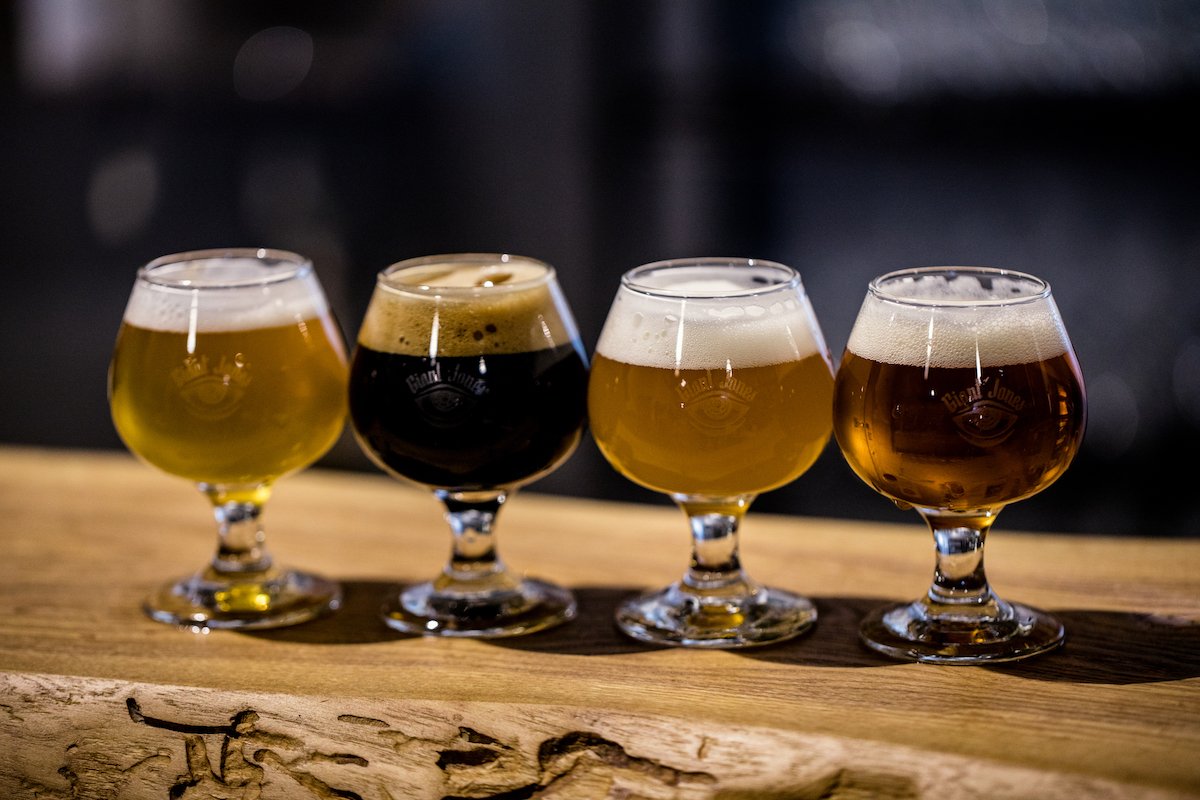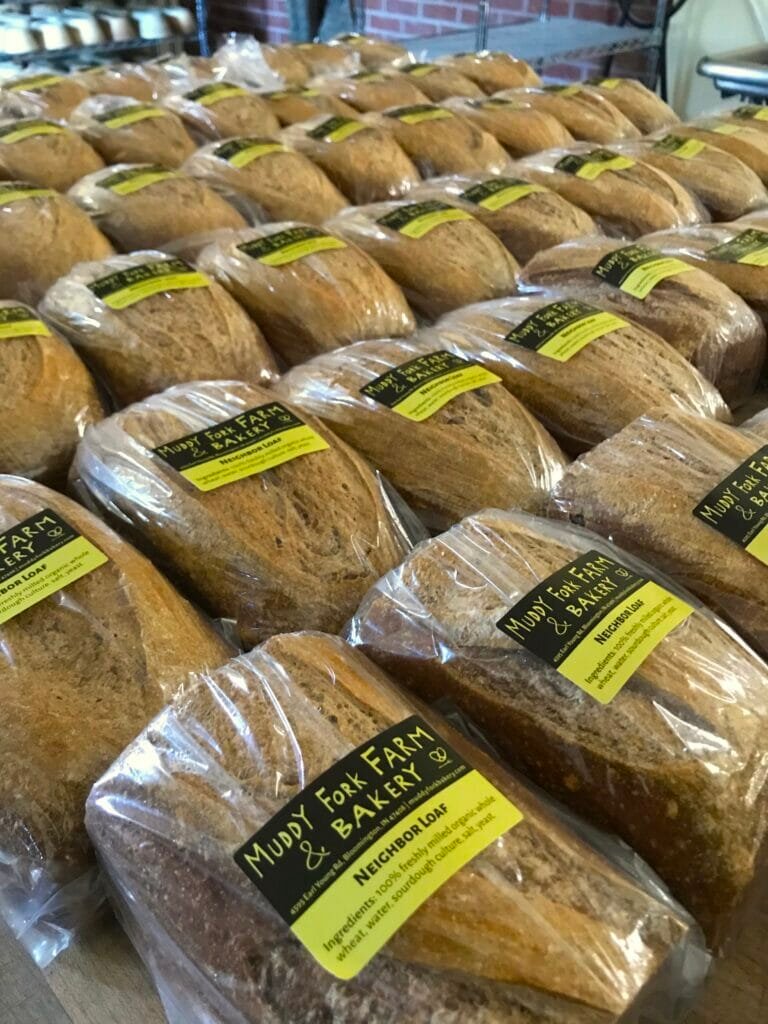Buckwheat chocolate croissants at Publican Quality Bread, loaves of sunflower rye and limpa bread at Lost Larson, sourdough muffins, cookies and seeded sourdough breads at Floriole and pie crusts and biscuits at Baker Miller are just a few delicious examples of locally grown and stone milled grains now prevalent in Chicago.
These pioneering bakers, who believed in the quality and integrity of local grain and locally milled flour, were founding members of what has become the Artisan Grain Collaborative (ACG). The network of 180 farmers, millers, maltsters, bakers, chefs, food manufacturers, brewers, distillers and researchers across the Upper Midwest are dedicated to building a diverse regional grain shed built on regenerative agriculture practices. The largest concentration of members is located in Illinois, Minnesota, Michigan and Wisconsin. There are also members in Iowa, Ohio, Indiana and Missouri.
Grain eaten in the Midwest comes from all over the place: Some is grown locally in the Great Plains, some is from western states and plenty of it comes from Canada and Europe. AGC was created to solve two interconnected challenges: the dominance of corn and soy agriculture in the Midwest and limited options available for diversifying those rotations; and the absence of locally grown and milled flours geared toward artisan bread production. Growing grains for food locally gives farmers opportunities to diversify their crop rotations, which brings about all sorts of soil, biodiversity and water quality benefits. Plus, having a local source for grains offers big economic opportunities for the region in both rural and urban communities, and it provides greater resilience in times of national or global supply chain disruptions.
Einkorn, spelt, and winter wheat in the field at AGC member Meadowlark Organics in Ridgeway, WI.
“We felt passionate about supporting the local grain economy, but [we] felt like our customers and the industry as a whole didn’t understand it and didn’t want to adopt it because it cost too much or because the quality of the grain was too inconsistent for commercial application,” says Baker Miller’s Dave Miller about the genesis of AGC in 2016. It all started organically as a conversation between passionate bakers and partners such as Fresh Taste, Delta Institute and Kendall College.
Executive director Alyssa Hartman joined AGC in 2019 as the first full-time staff member. Since then, the community has more than quintupled. “When I started, there were very few farmers engaged in the network,” she says. “Bakers and end users wanted to pull the farmers along. That paradigm within our organization has really flipped on its head. The farmers in a lot of ways are the ones that are driving the ship now. That’s really important—that the people growing the food are leading and telling the rest of the community what it is that they need.”
The organization is comprised of five member-led working groups: education and outreach; research and variety testing; farmer collaboration; brewing and distilling; and institutional procurement. “We have genuine representation from all different aspects of the grain production system,” says Hartman. “We have all the people in the room—including the maltsters and millers—and it really is a stakeholder-led initiative”

Tasting glasses of certified organic beer from Madison, WI AGC member Giant Jones Brewing Company.
Less than half of the farms in AGC’s network are certified USDA organic, but they are working directly with millers, bakers, chefs, brewers and distillers and have relationships where they can talk to customers about their growing practices.
For example, Luke Peterson at A-Frame Farms in Madison, Minnesota has a nine- to 12-year crop rotation—much longer than most Midwestern farms—that includes alfalfa, sunflowers, flax, barley, buckwheat, corn and spring and winter wheat. “Having consumers and buyers educated on alternative crops is really important because, without having a market for these, it’s not possible for farmers to grow them,” he says. “Diversity is key to [keeping] a healthy ecosystem functioning properly.”
For Claire Smith, a farmer, grain processor and food manufacturer of teff granola at Teffola, joining AGC encouraged her to take sustainable practices even further. “Our farm was already practicing regenerative agriculture when we joined AGC, but now we are going a bit deeper,” she says. “For example, we help stop soil erosion near water sources using a sod program, and we’re evaluating whether prairie stripping with perennial grasses and wildflowers might be a good option for us after I learned about prairie stripping at an AGC-organized event.”
Even during the pandemic, AGC has continued to grow, spurred by successful initiatives such as Neighbor Loaves, which provides freshly baked bread made with locally grown stone milled flour to local food pantries. Consumers can purchase these loaves at their local bakeries to feed neighbors in need.
Since launching in March 2020, Neighbor Loaves has distributed more 30,000 loaves to communities in need.

reshly baked Neighbor Loaves packaged and ready to head to Mother Hubbard’s Cupboard food pantry in Bloomington, IN. AGC member Muddy Fork Farm & Bakery has been baking Neighbor Loaves made with certified organic grain from Janie’s Farm in Ashkum, IL since 2020.
Over the next few years, AGC aims to engage more on policy issues and build visibility among consumers for diversified grain systems. For example, a recent bill signed in Michigan incentivizes craft distilleries to use more Michigan-grown grains in their mash bill and, in turn, supports Michigan grain farmers. Another primary goal is to accelerate the growth of regional supply chains and collect data on the state of regional grains in the Midwest, which will be shared openly among members to facilitate collaboration.
“The connections and networking have been extremely beneficial for us as we grow our specialty grains cleaning and processing business,” says Smith. “We’re looking to stabilize our farm revenue by providing a service for farmers who have to be gluten free. Being able to talk with other farmers and processors about what has worked for them or resources they’ve tapped into has been helpful, especially since this is our first venture into food grade grains.”
As anyone working in agriculture and food policy knows, it can take months or even years to enact big changes—but it’s essential labor. “We’re working to create a community-based alternative to a commodity system,” says Hartman. “We want to foster a system where more of our grain-based food dollars are going into the pockets of farmers and makers, where more of our landscape is producing food that fosters greater regional resilience in a changing climate and where we prioritize ecology and people over simplicity and business as usual.”
!function(f,b,e,v,n,t,s)
{if(f.fbq)return;n=f.fbq=function(){n.callMethod?
n.callMethod.apply(n,arguments):n.queue.push(arguments)};
if(!f._fbq)f._fbq=n;n.push=n;n.loaded=!0;n.version=’2.0′;
n.queue=[];t=b.createElement(e);t.async=!0;
t.src=v;s=b.getElementsByTagName(e)[0];
s.parentNode.insertBefore(t,s)}(window, document,’script’,
‘https://connect.facebook.net/en_US/fbevents.js’);
fbq(‘init’, ‘264217957779476’);
fbq(‘track’, ‘PageView’);












